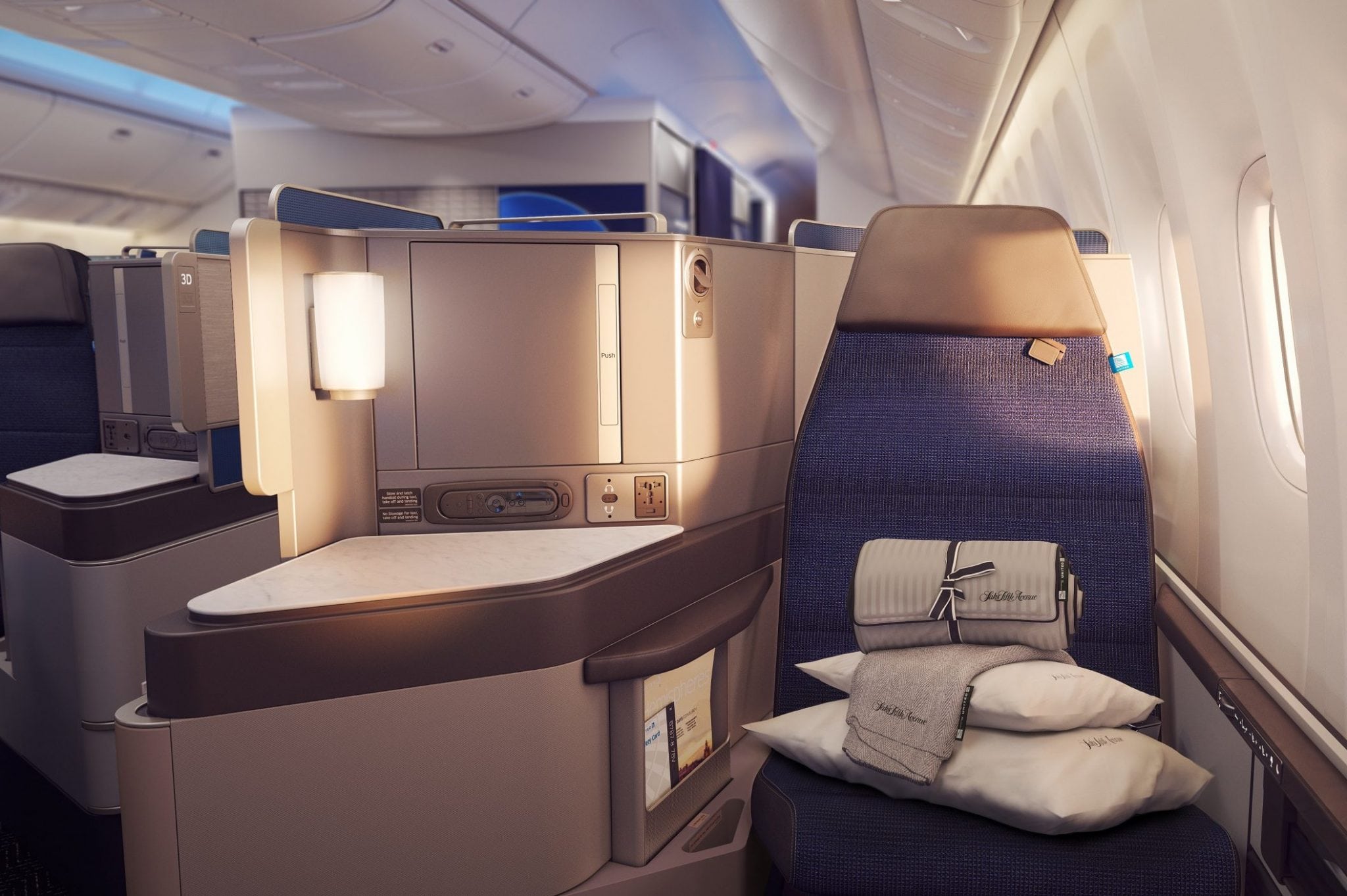The Unexpected Micro-Revolution Behind United Airlines' New Business Class Seat

Skift Take
Design firm Acumen did something no one thought possible. It created a high-density, direct-aisle access business class cabin for United Airlines. Will passengers like it? We'll find out early next year.
In creating the new United Airlines business class layout, designers at Acumen, a London-based consultancy that also delivered Etihad's Residence suite, did something few thought possible.
For United's new Polaris cabin, Acumen's designers figured out how to replace United's two current business class configurations, which require many passengers to step over seat-mates to reach the aisle - with one that allows easy aisle access for all, and they did so without requiring the airline to remove any seats. According to Acumen, after retrofits, United's Boeing 777s and Boeing 787s will have exactly as many premium seats as today - in the same space.
"They had been told by other manufacturers that this wasn't doable," said Ali Ersan, one of the designers.
This was a big deal. New-generation seats almost always take up more space than what they replace. Airlines have been willing to take the revenue hit because they're engaged in something resembling an arms race. Each is trying to come up with a more luxurious business class cabin than the next, as carriers seek to sway the same deep-pocketed passengers.
A business class retrofit similar to United's typically costs an airline at least four seats, Acumen's designers say. That can add up to a lot revenue. On some days this summer and fall, United is selling nonstop business class fares between San Francisco and Singapore for $10,000 or more, roundtrip.
Take four seats away, and it could be the difference between a profitable and unprofitable flight.
Some airlines have been willing to fly with fewer seats, hoping passengers might pay more for a more spacious pod. But under former CFO John Rainey and former CEO Jeff Smisek, United had been relentlessly focused on maintainin
